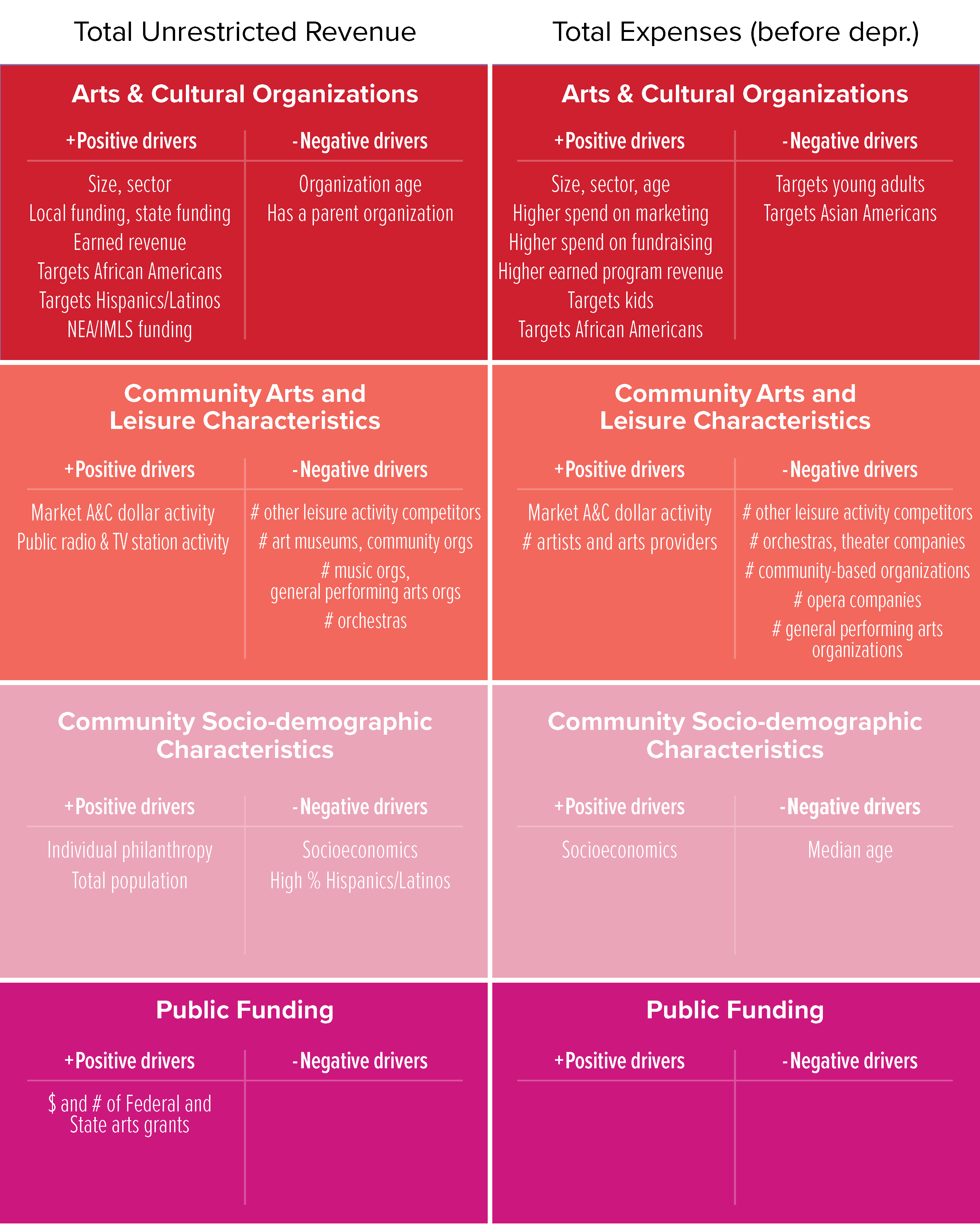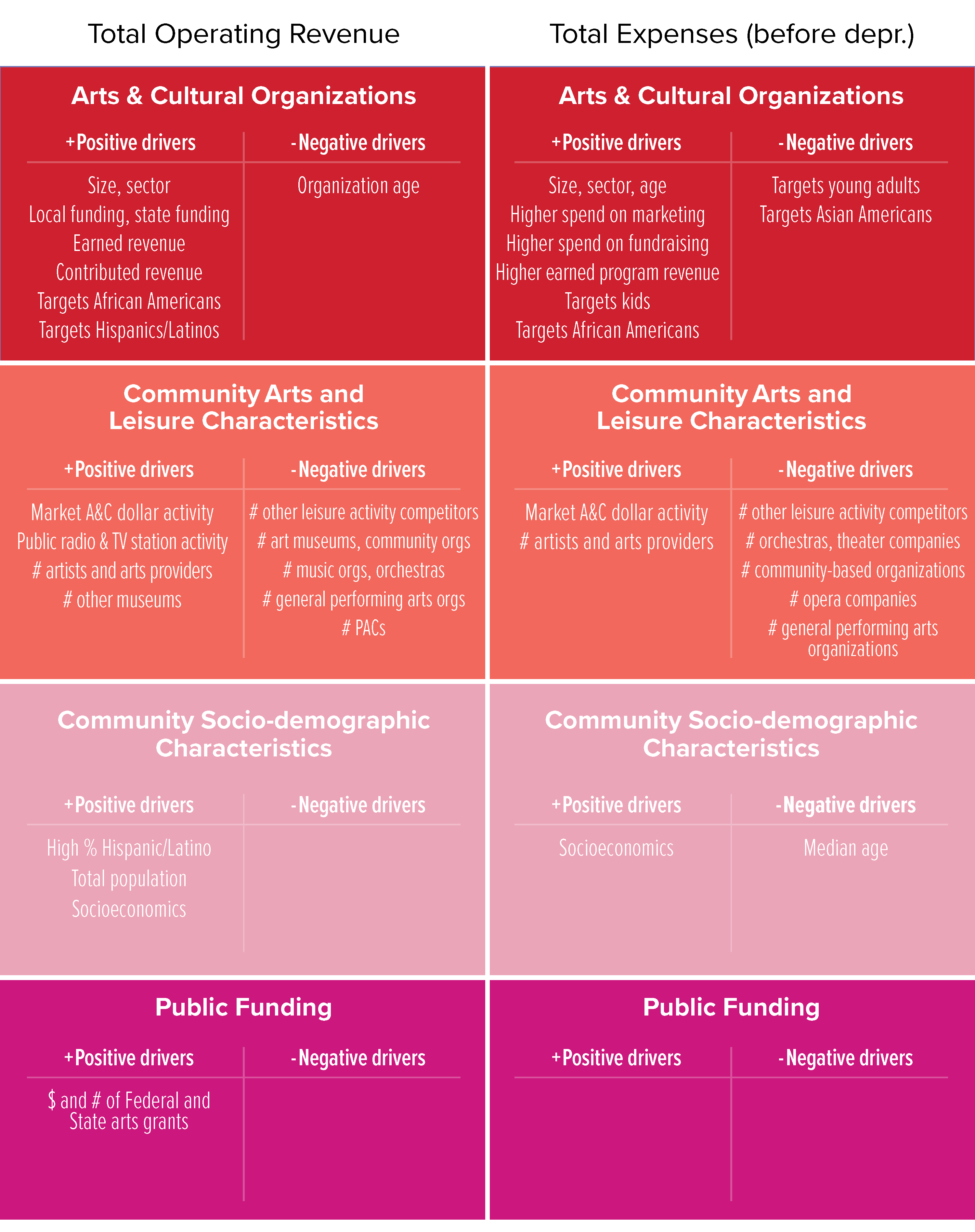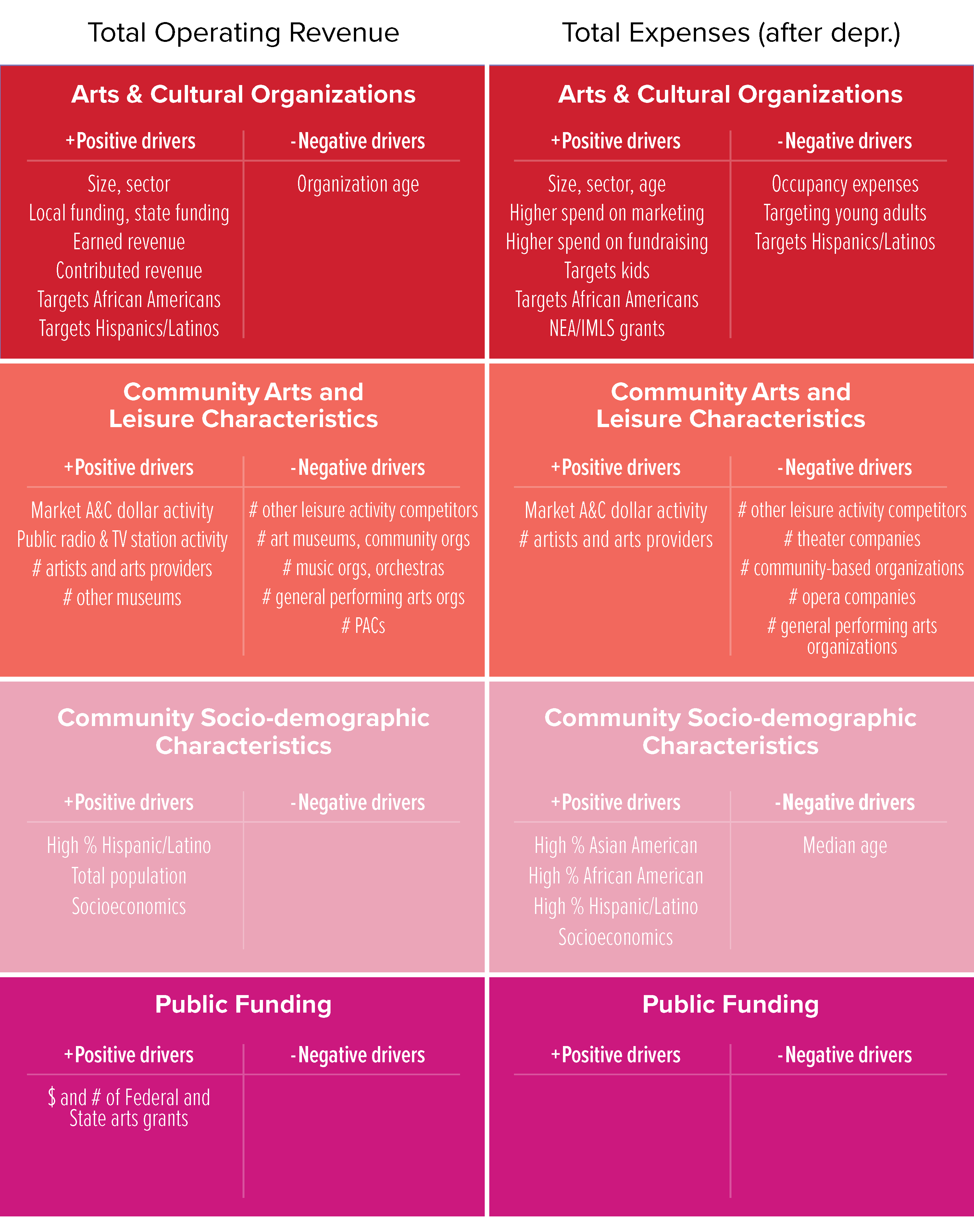What organizational characteristics affect this performance?
- Total unrestricted revenue tends to be higher for organizations that target Hispanics/Latinos or African Americans, and with higher levels of earned revenue and funding at the local, state, and federal level.
- Unrestricted revenue tends to decrease with organizational age, and when an organization is sheltered by a parent organization.
How do community arts and leisure characteristics affect performance?
- Unrestricted revenue tends to be higher for organizations in communities with higher levels of total arts dollar activity and a large presence of broadcast activity.
- Having more art museums, orchestras, community, music, or performing arts organizations tends to lower the unrestricted revenue for all organizations in this sector. Additionally, other leisure activity competitors tend to drive down arts and cultural organizations’ unrestricted revenue.
How do socio-demographic characteristics of the community affect performance?
- Unrestricted revenue is higher for organizations in communities where individual philanthropy is higher. This is also the case in communities with dense populations.
- As the level of socioeconomic status in a community increases, unrestricted revenue goes down. The fact that there are people in higher income brackets in a market does not necessarily mean that it is being directed to arts and cultural organizations. Unrestricted revenue also tends to be lower in communities with proportionally more Hispanics or Latinos.
What impact does public funding have on performance?
- Overall state and federal grant activity in the larger local marketplace has a positive effect on an individual organization’s level of unrestricted revenue.


